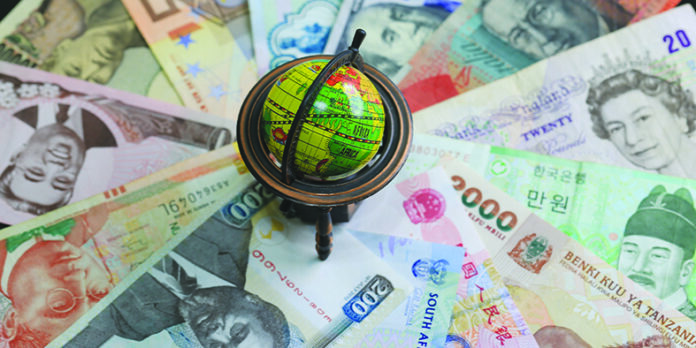In a world of global economics, some stories are as riveting as that of a country’s currency. The Pakistani rupee was recently declared to be the worst-performing currency in the South Asian region, but now it has emerged as the best-performing currency against dollars in September.
This remarkable journey from plummeting to a strikingly low rate of Rs 308 per dollar to the significant feat of closing at Rs 279 against the greenback, which marks the seven-week highest rate of the Pakistani rupee, is truly a financial epic. Yet, beneath this tale of resurgence lies a complex web of economic intricacies, political uncertainty, and bleak prospects. It is crucial to highlight that the currency has experienced an extraordinary appreciation of 9 percent within a month. This is an outcome of strict measures taken by the authorities to cope with currency smuggling via different routes.
While the Pakistani rupee has gained value, the question remained unexplored of whether this improvement will be sustainable amidst the challenges of trade imbalance, looming political uncertainty, debt burden, and lack of foreign investment. Therefore, the answer to this sustainability lies in a story of economic transformation, political will and stability, and long-term practical planning.
Amidst the backdrop of the agitated financial tapestry of Pakistan, which is marked by differences in the value of rupees in the open market, interbank, and grey markets, Pakistan finds itself in a difficult phase of economic uncertainty. In August the interbank rate stood at Rs 287 per dollar, while in the open market, the same dollar was exchanged at the rate of Rs 308. However, in the grey market, the value of the rupee dropped even further to about Rs 320, portraying a significant gap in comparison with the interbank rates.
This divergence involved a multitude of factors which included a drastic increase in import payments, heightened demand for dollars, and preference for illicit market exchange rates –as people wanted to capitalize on these stark exchange rate differentials. The repercussions of these disparities extend beyond the currency markets in Pakistan, with the potential consequences on the inflows of remittances in the economy. These factors combined with the uncertain economic outlook have impacted the value of the currency to the extent that it is declared as the worst-performing currency against the dollar in Asia.
For the long-term improvement in the value of Pakistani currency, it is imperative to diversify the economy for the reduction of trade imbalances. Political stability is a prerequisite to an investor-friendly environment, and it should be ensured. The authorities should support and incentivize export-oriented industries to bolster export-led growth. Effective implementation of these strategies can help the country cope with these complex economic challenges and pave the way for making the Pakistani rupee a better and stable currency.
The depreciation of the rupee in the interbank market is attributed to the lack of foreign currency inflows from bilateral and multilateral creditors. The US dollar continues to be in high demand, mostly for financing imports and paying off foreign debt. The smuggling of the dollar in Pakistan played a catalytic role in further depreciating the value of the rupee. Thus, it compelled the authorities to take strict measures.
In September of this year, the government decided to act on the subject matter and initiated a large-scale crackdown against stakeholders and elements involved in the currency smuggling and hoarding of US dollars. A major factor behind this massive depreciation of Pakistani currency is the high demand for dollars in financing smuggled goods and payments involved in the Afghanistan transit trade. ]
According to customs officials, all such payments are made in dollars without any track of the quantum of this illicit trade. Significant measures of enhancing monitoring systems at various points of entry including land, airport, borders, and sea with an objective of curtailing illicit movement of currency and goods.
As a result, there has been an unprecedented improvement in the appreciation of currency. Owing to this, the Pakistani rupee claimed the world’s best-performing currency against the dollar for the month of September. While this strategy has seemingly been effective in rejuvenating the currency’s value it also raises questions about its long-term sustainability and its impact on the other aspects of the economy.
In the short run, such measures and strategies can be effective and have given positive results. This cannot be sustainable in the long run amidst the political crisis in the country, high debt burden, weak economic outlook, and high reliance on imports with low-value exports. A bleak political climate impedes foreign investment, in the past two years the foreign direct investment has faced downward pressure and declined by 25 percent. Despite the depreciated currency, the exports have declined. Due to the narrow base exports have declined by 19 percent. In the existence of all these challenges, this appreciation of the Pakistani rupee will not be sustainable. To effectively prevent currency smuggling, it is imperative to tackle the underlying causes of the issue instead of just managing its symptoms.
For the long-term improvement in the value of Pakistani currency, it is imperative to diversify the economy for the reduction of trade imbalances. Political stability is a prerequisite to an investor-friendly environment, and it should be ensured. The authorities should support and incentivize export-oriented industries to bolster export-led growth. Effective implementation of these strategies can help the country cope with these complex economic challenges and pave the way for making the Pakistani rupee a better and stable currency.























